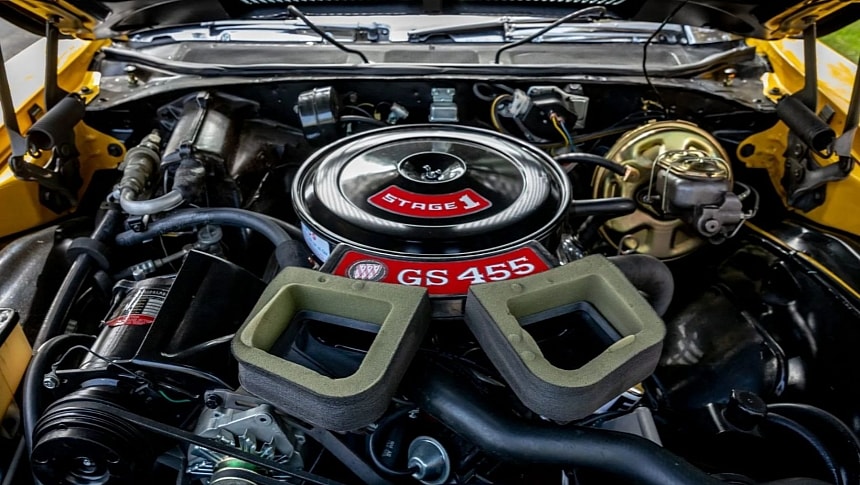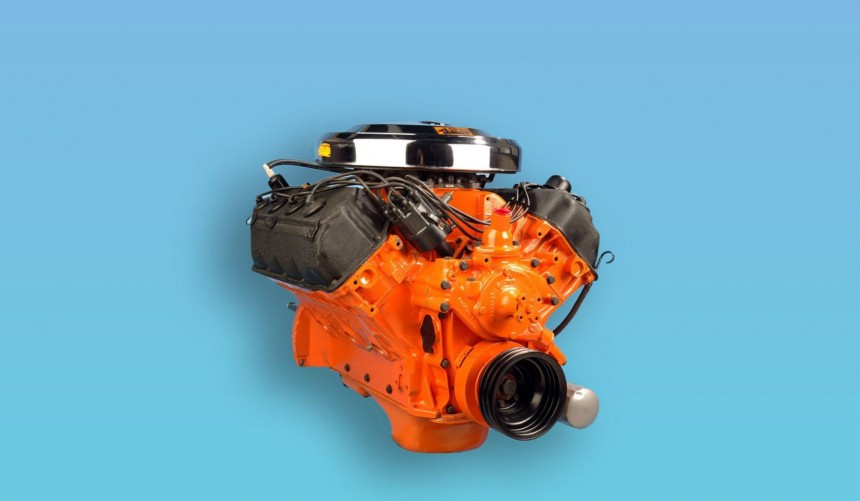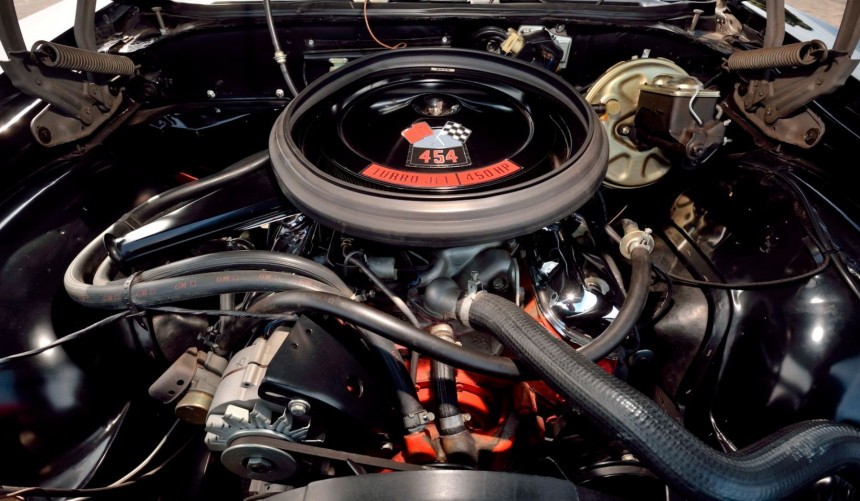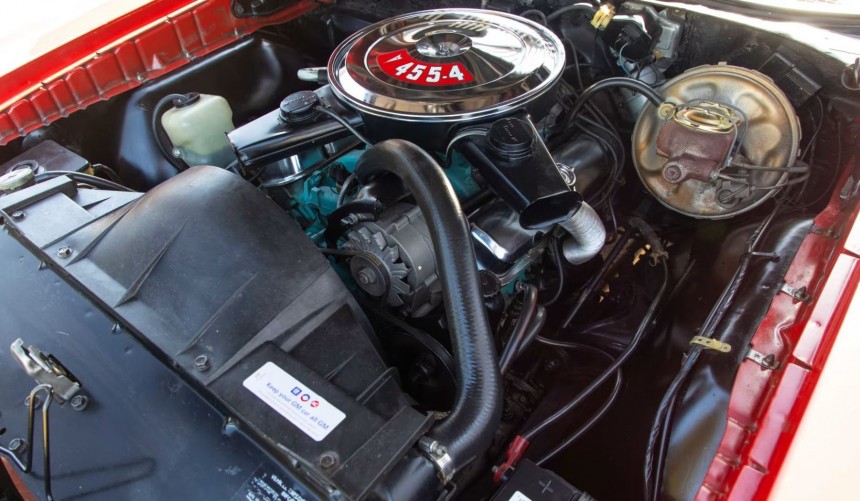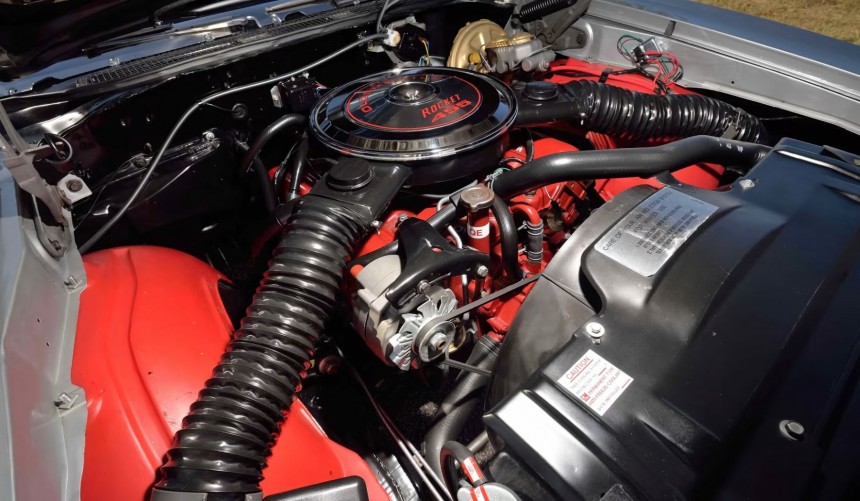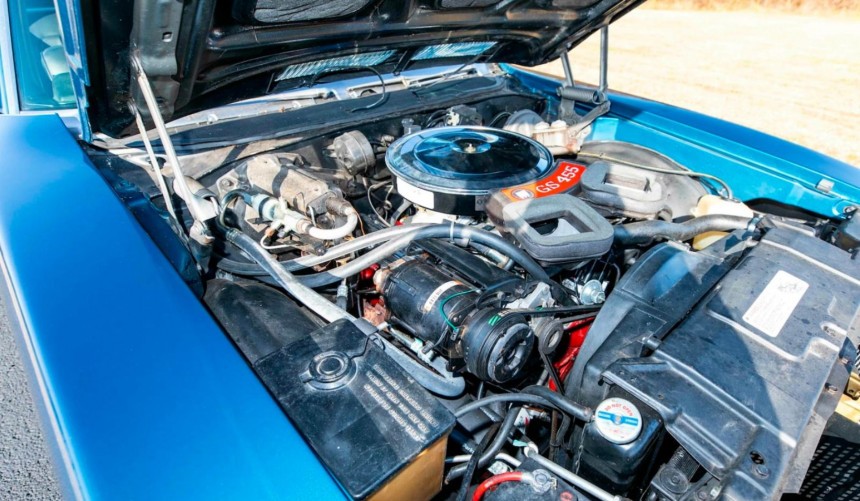If you're a classic muscle car enthusiast, you probably know which of the era's most powerful production V8s were in terms of horsepower, but have you ever wondered which were the torquiest?
During the 1960s and early 1970s, American manufacturers were engaged in a high-performance war that gave birth to some of the most iconic production cars of all time.
Though they were usually more affordable than thoroughbred sports cars, muscle cars were equipped with potent V8s that made outrageous output figures, at least by 1960s and 1970s standards.
Since it's the unit used to measure power, and ultimately indicates how potent an engine is, peak horsepower is the unit that everyone remembers. However, the closely related torque, which indicates how much force the engine produces, is also important, so let's remember the five most torquiest production V8s of the muscle car era.
Chrisler's second-generation V8 with hemispherical combustion chambers, the 426 HEMI, started life as a race engine that helped Plymouth dominate the 1964 NASCAR season.
Since it wasn't used in a production car, the legendary engine was banned from the competition for the 1965 season, which more or less forced Chrysler to develop a street version and make it available to the car-buying public.
Thus, for the 1966 model year, the so-called street HEMI was unleashed. Equipped with dual inline four-barrel Carter AFB carburetors, the 426-ci (7.0-liter) big-block V8 was rated at 425 hp and 490 lb-ft (664 Nm) of torque
Produced until 1971, it was available in Plymouth and Dodge's meanest intermediates as well as the most potent versions of their E-body pony cars.
Though it was only the fifth torquiest production V8 of the era, the HEMI was one of the most powerful, and the cars that featured it were hard to beat on the street, drag strip, or track.
For the 1970 model year, GM ended its self-imposed ban on V8s larger than 400 ci (6.4 liters) on intermediate models, a decision that allowed engineers to upgrade their muscle car big-block V8s to unprecedented displacements and power figures.
At Chevrolet, the new range-topping V8 became the 454 (7.4 liters), which could be had in one of two configurations.
The first, available on the Chevelle SS, El Camino SS, Monte Carlo, or the full-size Caprice and Corvette sports car was the LS5, rated at 360 hp (390 in the Corvette) and 500 lb-ft (678 Nm) of torque.
If those figures weren't enough, Chevelle and El Camino SS customers could get the LS6 454. Upgraded with a hefty list of high-performance hardware, this 454 was capable of producing 450 hp and the same 500 lb-ft (678 Nm) of torque.
Although it was not the torquiest American production V8 from the era, the Chevy 454, particularly in LS6 guise, was arguably the most epic engine fitted into a classic muscle car from the factory.
GM's decision to lift the 400-ci (6.5 liters) ban in 1970 also made Pontiac engineers busy.
For that exciting model year, the largest V8 offering available in the legendary GTO became the D-port 455-ci (7.5 liters) HO (High Output), rated at 360 hp and 500 lb-ft (678 Nm) of torque.
The Pontiac 455 survived well into the 1970s in High-Output (HO) or Super-Duty guises. The latter made the post-1970 Trans Am but with a lower power and torque rating.
In the following years, stringent emission regulations restricted the 455's power figure and, of course, its torque rating even more.
The large-displacement V8 was produced until the end of the 1975 model year when emission regulations and fuel efficiency issues forced Pontiac to retire it.
Unlike fellow GM divisions, Oldsmobile bypassed the 400-ci (6.5 liters) ban and installed a 455 originally conceived for its full-size model into a high-performance intermediate.
The muscle car in question was the 1968-1969 4-4-2-based Hurst/Olds, which received a 455-ci (7.5 liters) Rocket V8 because the unit was installed by Hurst Performance, not Oldsmobile.
Rated at 390 hp and 500 lb-ft (678 Nm) of torque, the potent big-block V8 eventually made its way into the 4-4-2 in 1970, when the GM ban was lifted.
That year, it produced 365 hp in standard guise and 370 hp with the W-30 option installed. However, the torque rating remained unchanged.
The epic 1970 model year, which, as mentioned before, gave the GM divisions the freedom to go past the 400-ci (6.6 liters) mark on intermediate V8s, produced another exciting big block.
Developled by Buick for its Gran Sport and GSX muscle cars, this particular 455 was rated at 350 hp in base spec and 360 hp with the Stage 1 option installed.
Unlike the 455 V8s built by Pontiac and Olds, the Buick unit was able to make 510 lb-ft (691 Nm) of torque.
That made it the torquiest production V8 from the muscle car era and the torquiest American production engine for the next two decades.
It was dethroned in the early 1990s by the Dodge Viper's engine, which needed two extra cylinders to generate more torque.
Though they were usually more affordable than thoroughbred sports cars, muscle cars were equipped with potent V8s that made outrageous output figures, at least by 1960s and 1970s standards.
Since it's the unit used to measure power, and ultimately indicates how potent an engine is, peak horsepower is the unit that everyone remembers. However, the closely related torque, which indicates how much force the engine produces, is also important, so let's remember the five most torquiest production V8s of the muscle car era.
Chrysler 426 HEMI V8 - 490 lb-ft (664 Nm)
Since it wasn't used in a production car, the legendary engine was banned from the competition for the 1965 season, which more or less forced Chrysler to develop a street version and make it available to the car-buying public.
Thus, for the 1966 model year, the so-called street HEMI was unleashed. Equipped with dual inline four-barrel Carter AFB carburetors, the 426-ci (7.0-liter) big-block V8 was rated at 425 hp and 490 lb-ft (664 Nm) of torque
Produced until 1971, it was available in Plymouth and Dodge's meanest intermediates as well as the most potent versions of their E-body pony cars.
Though it was only the fifth torquiest production V8 of the era, the HEMI was one of the most powerful, and the cars that featured it were hard to beat on the street, drag strip, or track.
Chevrolet 454 LS5 and LS6 V8 - 500 lb-ft (678 Nm)
At Chevrolet, the new range-topping V8 became the 454 (7.4 liters), which could be had in one of two configurations.
The first, available on the Chevelle SS, El Camino SS, Monte Carlo, or the full-size Caprice and Corvette sports car was the LS5, rated at 360 hp (390 in the Corvette) and 500 lb-ft (678 Nm) of torque.
If those figures weren't enough, Chevelle and El Camino SS customers could get the LS6 454. Upgraded with a hefty list of high-performance hardware, this 454 was capable of producing 450 hp and the same 500 lb-ft (678 Nm) of torque.
Although it was not the torquiest American production V8 from the era, the Chevy 454, particularly in LS6 guise, was arguably the most epic engine fitted into a classic muscle car from the factory.
Pontiac 455 HO V8 ( D-port) - 500 lb-ft (678 Nm)
For that exciting model year, the largest V8 offering available in the legendary GTO became the D-port 455-ci (7.5 liters) HO (High Output), rated at 360 hp and 500 lb-ft (678 Nm) of torque.
The Pontiac 455 survived well into the 1970s in High-Output (HO) or Super-Duty guises. The latter made the post-1970 Trans Am but with a lower power and torque rating.
In the following years, stringent emission regulations restricted the 455's power figure and, of course, its torque rating even more.
The large-displacement V8 was produced until the end of the 1975 model year when emission regulations and fuel efficiency issues forced Pontiac to retire it.
Oldsmobile Rocket 455 V8 - 500 lb-ft (678 Nm)
The muscle car in question was the 1968-1969 4-4-2-based Hurst/Olds, which received a 455-ci (7.5 liters) Rocket V8 because the unit was installed by Hurst Performance, not Oldsmobile.
Rated at 390 hp and 500 lb-ft (678 Nm) of torque, the potent big-block V8 eventually made its way into the 4-4-2 in 1970, when the GM ban was lifted.
That year, it produced 365 hp in standard guise and 370 hp with the W-30 option installed. However, the torque rating remained unchanged.
Buick GS 455 V8 - 510 lb-ft (691 Nm)
Developled by Buick for its Gran Sport and GSX muscle cars, this particular 455 was rated at 350 hp in base spec and 360 hp with the Stage 1 option installed.
Unlike the 455 V8s built by Pontiac and Olds, the Buick unit was able to make 510 lb-ft (691 Nm) of torque.
That made it the torquiest production V8 from the muscle car era and the torquiest American production engine for the next two decades.
It was dethroned in the early 1990s by the Dodge Viper's engine, which needed two extra cylinders to generate more torque.
